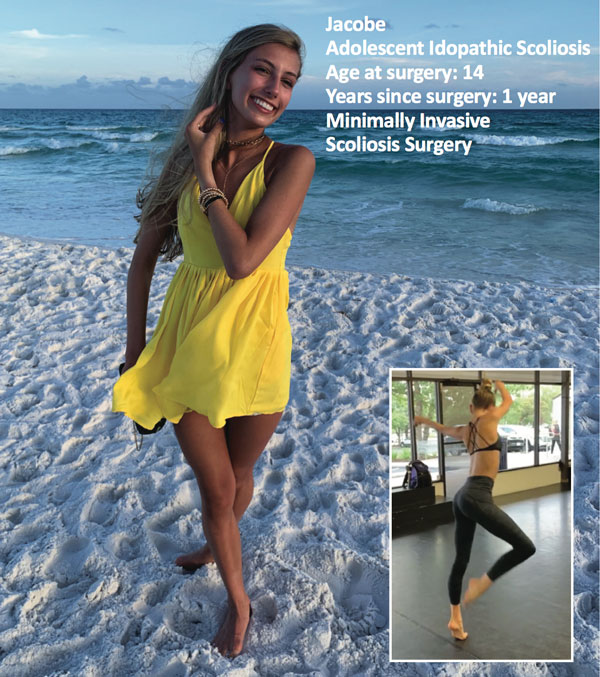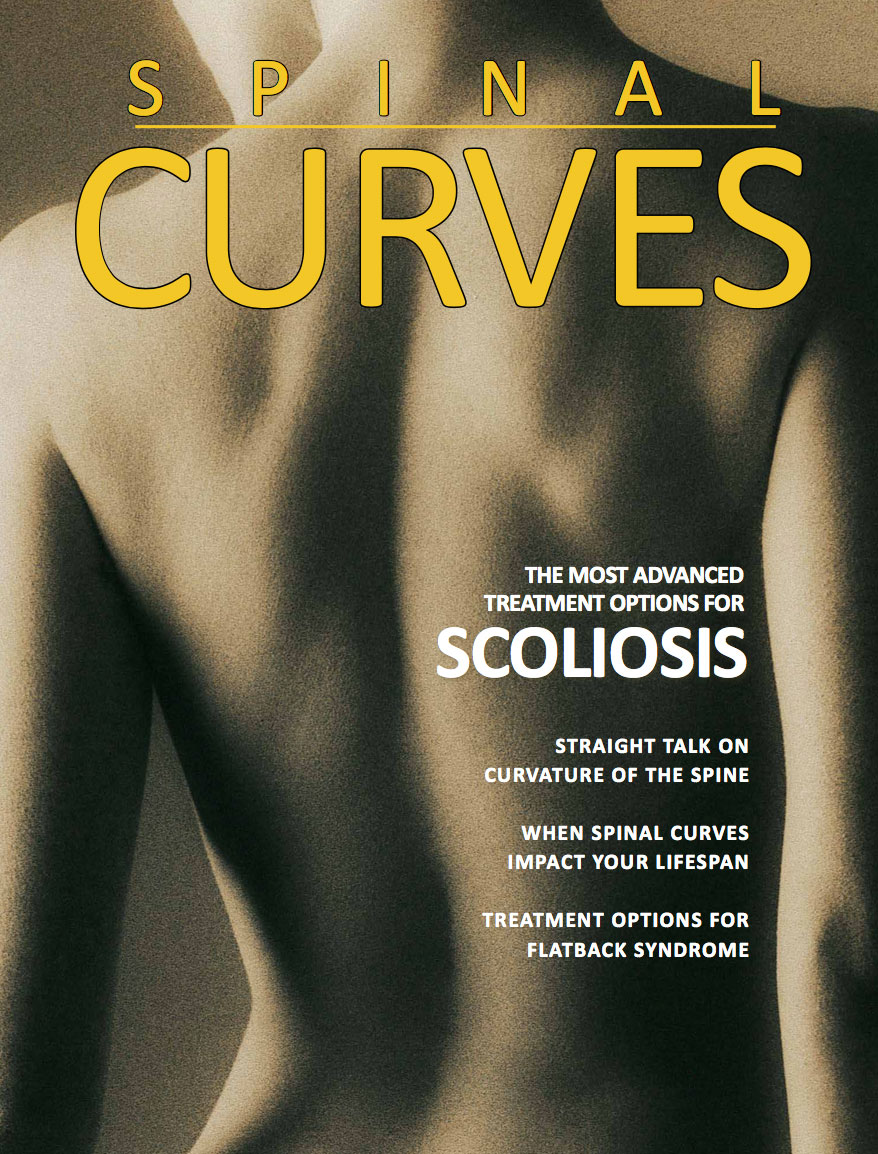 Minimally Invasive Scoliosis Surgery
Minimally Invasive Scoliosis Surgery
Adolescent Idopathic Scoliosis
Age at surgery: 15
Years since surgery: 1 year
Minimally Invasive Scoliosis Surgery
Jacobe was first diagnosed with a spinal curve at age 13 when she was in the 7th grade. Her pediatric orthopedic surgeon at the time recommended that she wear a brace, and she did so for about a year. But follow up X-rays revealed that Jacobe’s curve was worsening at an alarming rate to almost 50 degrees.
Jacobe’s mom Janice wanted an opinion from a surgeon who specializes in only scoliosis. “We researched a lot and Dr. Geck was referred to us by several parents who had kids who did well with Dr. Geck,” Janice remembers. “We felt we were likely headed toward surgical correction for Jacobe, so we focused in on a surgeon who could perform mini scoliosis surgery. That was a huge decision factor for our child. When Dr. Geck assessed Jacobe, we were pleased that he felt she would be a candidate for the mini scoliosis surgery approach. Mini scoliosis surgery would involve less blood loss with the three smaller incisions rather than one large one.”
The decision to proceed with surgical correction was a serious one for Jacobe and her parents. “I didn’t feel any back pain, the only thing we noticed was that my ribs were tilted out,” remembers Jacobe. “So it was a serious decision to go forward with an elective surgery when I didn’t have pain symptoms. But we visited with several pediatric orthopedic surgeons, and all the surgeons confirmed that I would need surgery at some point — just a matter of when. They all emphasized that the key was to do the surgery sooner rather than later. By doing surgery while I was young in my teens, my spine would be more flexible and my recovery would be faster and less traumatic.”
 Jacobe’s mom Janice recalls the family decision process: “There is never a good time to have
a major surgery. Because she had no pain symptoms, it was a difficult decision to go forward
degrees, it would worsen at least one degree per year, so it was clear that she would be very
deformed and the curve would impact her internal organs and compromise her lifespan.”
The family concluded that a spinal correction surgery was inevitable and decided to move
forward with Dr. Geck. At the time of surgery, Jacobe’s spinal curve had worsened to about 55
degrees. Dr. Geck performed mini scoliosis surgery, making three smaller incisions rather than
a long 12-inch incision to access the spinal vertebrae. Using instruments and screws that were
installed into the vertebrae, Dr. Geck successfully de-rotated Jacobe’s spine through the
smaller incisions.
Jacobe’s mom Janice recalls the family decision process: “There is never a good time to have
a major surgery. Because she had no pain symptoms, it was a difficult decision to go forward
degrees, it would worsen at least one degree per year, so it was clear that she would be very
deformed and the curve would impact her internal organs and compromise her lifespan.”
The family concluded that a spinal correction surgery was inevitable and decided to move
forward with Dr. Geck. At the time of surgery, Jacobe’s spinal curve had worsened to about 55
degrees. Dr. Geck performed mini scoliosis surgery, making three smaller incisions rather than
a long 12-inch incision to access the spinal vertebrae. Using instruments and screws that were
installed into the vertebrae, Dr. Geck successfully de-rotated Jacobe’s spine through the
smaller incisions.
Janice notes that the surgery was successful in reducing Jacobe’s curve from 55 degrees at the time of surgery, to about 12, a minimal curve that is largely unnoticeable, and should not have any negativeimpact on her internal organs or lifespan.
“After surgery, Dr. Geck had a few limitations on my activity for a couple months while I was recovering,” remembers Jacobe. “But after that period, I have no limitations, and I can do everything I would normally do. I am on the high school drill team and I love dancing. Ironically, I tried out for the drill team the day before I was going to have surgery, and I made the team. So I just had to get through the three-month recovery period to rejoin the dance team. The recovery went very fast and it was great to get back to the team.”






